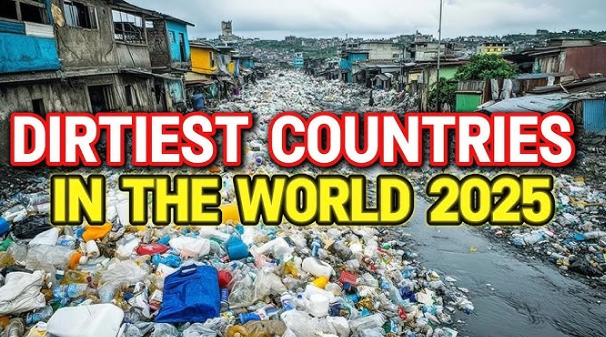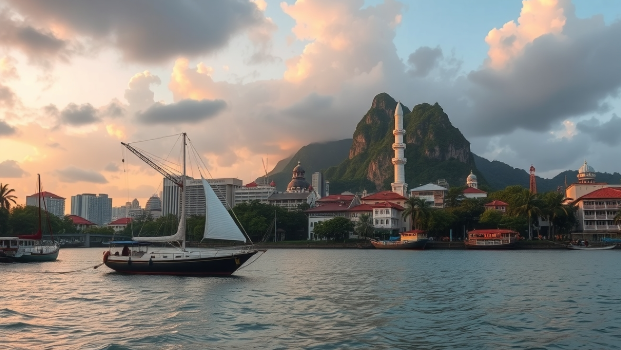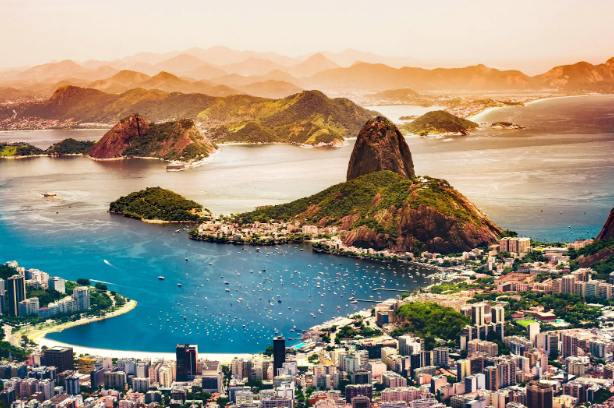When people ask, what is the dirtiest country in the world, they are usually talking about pollution, waste, and environmental problems. A dirty country can mean a place with unsafe air, unclean water, and too much trash. Pollution does not only harm the environment but also affects the health of people who live there.
Many organizations, like the World Health Organization (WHO) and Yale’s Environmental Performance Index (EPI), collect data to rank countries based on cleanliness and pollution levels. These rankings often look at air quality, waste management, water safety, and overall sustainability. The country that ranks lowest in these studies is often considered the “dirtiest country in the world.”
Table of Contents
Understanding What “Dirtiest” Means
The word dirtiest can mean different things depending on what is being measured. Some factors include:
- Air pollution – High levels of smog, smoke, or harmful gases.
- Water pollution – Dirty rivers, unsafe drinking water, or sewage problems.
- Waste and garbage – Trash on streets, poor recycling, and no waste control.
- Deforestation and land damage – Cutting down forests and harming soil.
Because of these factors, one country may have dirty air while another may struggle more with unsafe water.
Which Country is Considered the Dirtiest
According to recent data, Chad, a country in Central Africa, is often ranked as the dirtiest country in the world in global environmental studies. It scores very low in air quality, sanitation, and safe drinking water. Many people in Chad face problems with waste management and clean energy, which harms both health and the environment.
Other countries that also face major pollution issues include:
- Pakistan – Struggles with severe air pollution in big cities.
- India – Faces high smog levels, especially in Delhi.
- Iraq – Suffers from unsafe water and waste issues.
- Nepal – Has poor waste control and rising air pollution.
Why Chad is Ranked the Dirtiest Country
Chad’s ranking comes from a mix of problems:
- Air Quality – Cooking is often done with wood or charcoal, creating harmful smoke.
- Lack of Clean Water – Many people do not have safe drinking water.
- Poor Waste Management – Trash is often burned or dumped without control.
- Poverty and Infrastructure Issues – The country does not have strong systems for sanitation or recycling.
This combination makes Chad one of the hardest places to live in terms of cleanliness and environment.
The Health Impact of Pollution
Living in a dirty environment affects people in many ways:
- Breathing problems – Asthma, lung infections, and chronic diseases.
- Unsafe drinking water – Leads to stomach illnesses and even deadly diseases.
- Skin problems – Pollution and waste cause rashes and infections.
- Shorter life expectancy – Studies show people in polluted countries live fewer years.
Children and elderly people are at the highest risk.
How Air Pollution Shapes Daily Life
In many polluted countries, the air is unsafe to breathe, especially in crowded cities. People wear masks, schools close during smog season, and health costs rise. Countries like India and Pakistan face these problems every year, especially in winter when air quality gets worse.
Water Pollution and Its Dangers
Clean water is one of the biggest challenges. In dirty countries, people may drink water that contains bacteria or chemicals. This can cause deadly diseases like cholera or typhoid. Without safe water, even daily activities like cooking, washing, or farming become dangerous.
The Role of Poverty and Development
Most of the dirtiest countries are also some of the poorest. When a country has limited money, it cannot build strong waste systems, modern energy solutions, or clean water plants. Poverty makes pollution worse, and pollution makes poverty worse—a cycle that is hard to break.
Steps Countries Can Take to Become Cleaner
Even the dirtiest country can make progress. Some helpful steps include:
- Improving waste systems – Recycling and safe trash disposal.
- Switching to clean energy – Solar and wind power instead of wood or coal.
- Better water treatment – Safe drinking water for every home.
- Education programs – Teaching people how pollution harms health.
- Government action – Strong laws to reduce pollution.
Some countries, like Bangladesh, have made progress in reducing plastic pollution by banning plastic bags. These actions show that improvement is possible.
How Can People Help
Even small actions by individuals can make a difference:
- Using less plastic.
- Saving water and electricity.
- Planting trees.
- Supporting eco-friendly businesses.
- Raising awareness in communities.
When more people take part, the change becomes bigger.
Comparing Cleanest and Dirtiest Countries
On the other side of the list, some countries are known as the cleanest in the world. For example:
- Switzerland – Famous for clean air and water.
- Finland – Strong focus on nature and green energy.
- Denmark – Excellent waste management and sustainability programs.
The contrast shows how government policy, public awareness, and investment can turn a country from polluted to clean.
Future of the World’s Dirtiest Countries
Many organizations and charities are working to help the dirtiest countries. By improving access to clean water, renewable energy, and education, these nations can slowly move up the rankings. The journey may take decades, but small improvements each year bring hope.
Conclusion
When we ask, what is the dirtiest country in the world, the answer is usually Chad, based on global pollution rankings. However, other nations like Pakistan, India, and Iraq also face serious challenges. Being “dirty” is not just about appearance—it means unsafe air, polluted water, and poor waste systems that harm human health.
The good news is that change is possible. Countries can invest in clean energy, water treatment, and waste management. People can also help by living more sustainably. Cleanliness is not just a luxury; it is a basic human right that every person deserves.
FAQs
1. What is the dirtiest country in the world right now?
According to environmental performance rankings, Chad is often listed as the dirtiest country due to poor air quality, lack of clean water, and weak waste systems.
2. Why are some countries dirtier than others?
Poverty, lack of infrastructure, rapid urban growth, and weak government policies often make a country dirtier.
3. Which country has the cleanest environment?
Countries like Switzerland, Finland, and Denmark are considered among the cleanest, with strong focus on sustainability and environmental health.
4. How does pollution affect human health?
It causes breathing problems, waterborne diseases, skin infections, and shortens life expectancy.
5. Can a dirty country become clean?
Yes, with investment in renewable energy, waste control, and clean water systems, even the dirtiest countries can improve over time.





